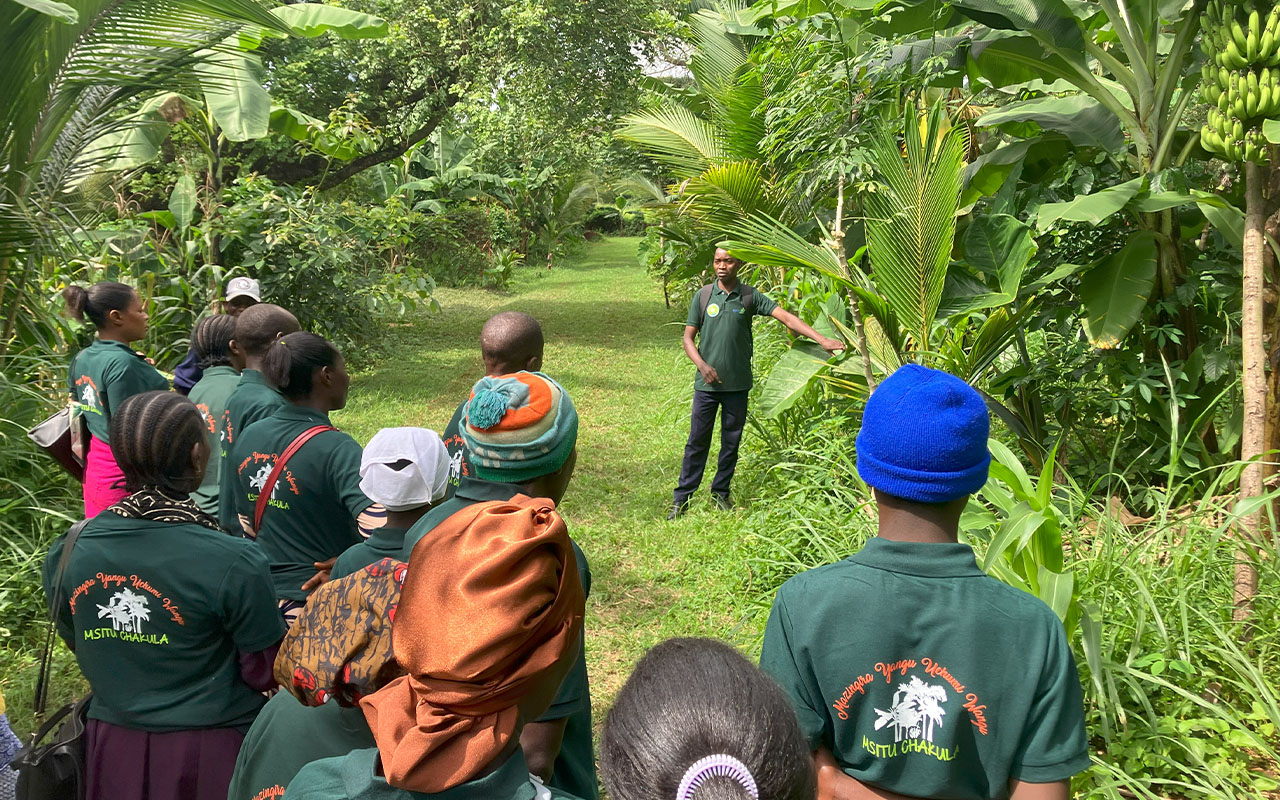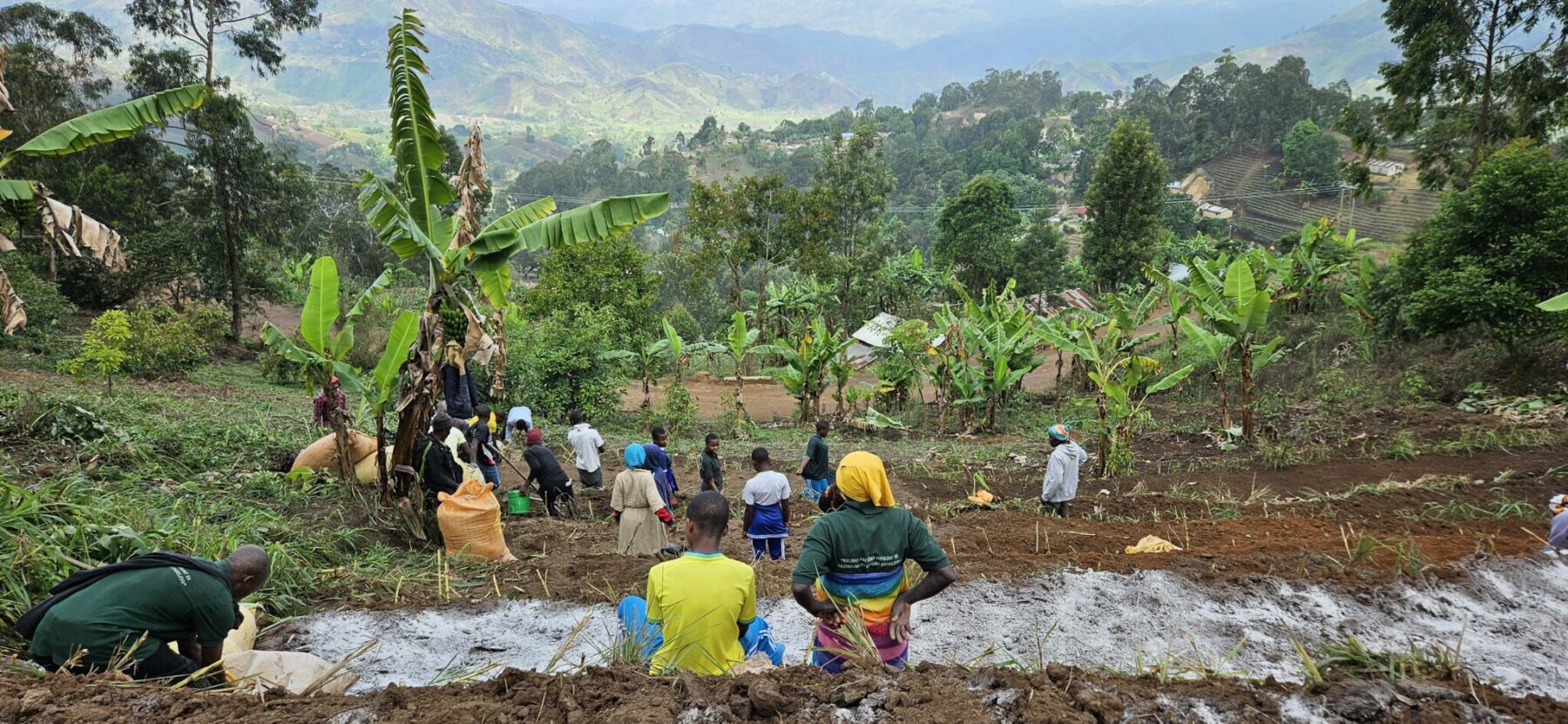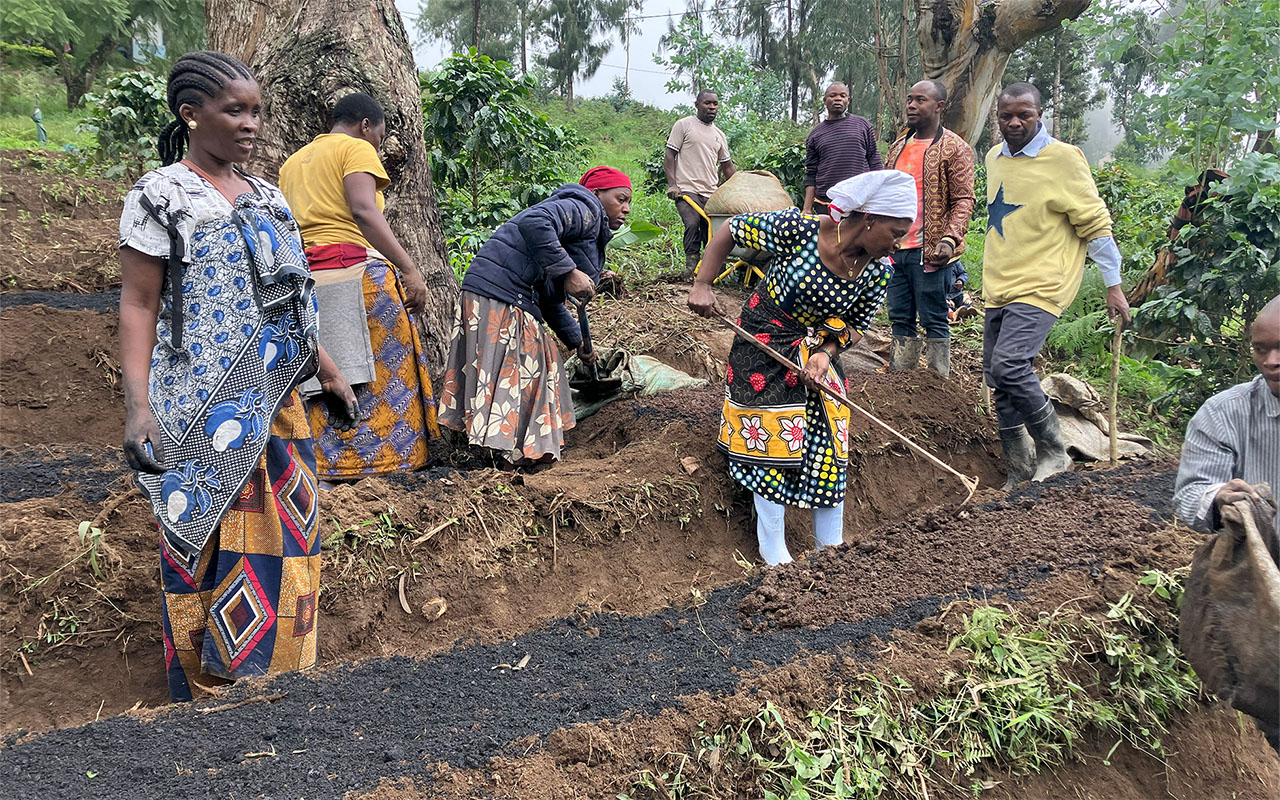In the Uluguru Mountains of Tanzania, in the village of Mgeta — about 50 kilometers from Morogoro, where APOPO’s Tanzania headquarters are based — farmers are rethinking how they work with the land. On steep hillsides long challenged by erosion and unpredictable rainfall, change is underway through the MAP Project, a collaboration between APOPO, the Mgeta Livelihood Development Fund (MLDF), and NLO.
At the core of the project is syntropic agroforestry — a form of regenerative farming that improves soil health, increases food production, and encourages biodiversity. The approach also supports several United Nations Sustainable Development Goals (SDGs), including:
Training Rooted in Local Knowledge
Over a three-month period, five MLDF staff members received practical and digital training in ecological farming methods and tools like GPS and ESRI mapping. With input from APOPO specialists, they co-created a training manual tailored to Mgeta’s conditions and farming traditions.
They went on to train seven farmer groups from surrounding villages, bringing together 130 farmers — more than half of them women. Each group selected its name and structure, and identified land to host demonstration plots. Names included Moto na Mazingira (Masalawe), Mtoto Kwanza and Sang’ano (Nyandira), Chipato (Kododo), Tushikamane (Tchenzema), Tulamkeni (Kibuko), and Ukombozi (Mwalazi).
Building Demonstration Plots
These plots became the main training ground. Farmers worked side by side preparing beds, applying organic manure and biochar, planting, and learning how to manage water and soil cover. They planted 3,775 seedlings across 25 tree species, along with a variety of legumes and vegetables.
Before the project, most farms produced only a handful of crops. Now, demonstration plots support over 21 different species each, helping restore soil, buffer against drought and pests, and provide more diverse harvests.
To support this effort, the project delivered 260 bags of manure and 160 bags of biochar from the lowlands, along with 1,000 kg of woodchips and 200 kg of ash for mulching. Farmer groups also received tools for pruning, irrigation, and maintenance.
In addition to the group plots, 2,275 more trees were allocated to farmer groups, and 1,500 were distributed to 36 individual farmers who volunteered to start syntropic agroforestry systems on their own farms. Seed packs included beans, pigeon peas, amaranth, onions, carrots, and other fast-growing crops to support food needs while improving the soil.
Knowledge in Practice
As part of the training, farmers visited APOPO’s own syntropic agroforestry plot at the Sokoine University of Agriculture (SUA) in Morogoro. These visits helped connect ideas from the classroom to results on the ground.
Each plot was also digitally mapped and added to an ESRI dashboard. This allows for ongoing monitoring of plant health, soil conditions, and species diversity. FarmTree software is now being used to model how income, soil carbon, and water retention could improve over the coming years.

Learning from Setbacks
Heavy rain and landslides delayed some activities and damaged local roads. One group had difficulty maintaining attendance. In response, the project team adjusted training schedules, brought in a new group from Kibuko, and provided extra support to ensure tree survival and farmer engagement.
Women played a central role throughout the project. More than half of the participants were women, many of them co-leading their groups. Training was scheduled close to home to support participation, and women’s input helped shape practical decisions about food production, seed choices, and group organization.
Sustaining the Momentum
The demonstration plots planted this season will continue to grow and serve as training sites for others in the community. With local leaders now trained, farming groups organized, and digital monitoring in place, the project is well-positioned to expand and evolve with local leadership.
Supporters of APOPO’s HeroTREEs program have helped make this work possible. In Mgeta, farmers are building stronger, more resilient livelihoods while protecting the land that sustains them.
One farmer summed it up during a group session, pointing to the printed slogan on their shirt: “Food forest – my environment, my economy.”
Support the HeroTREEs project and help protect the environment and safeguard the future of local communities?



